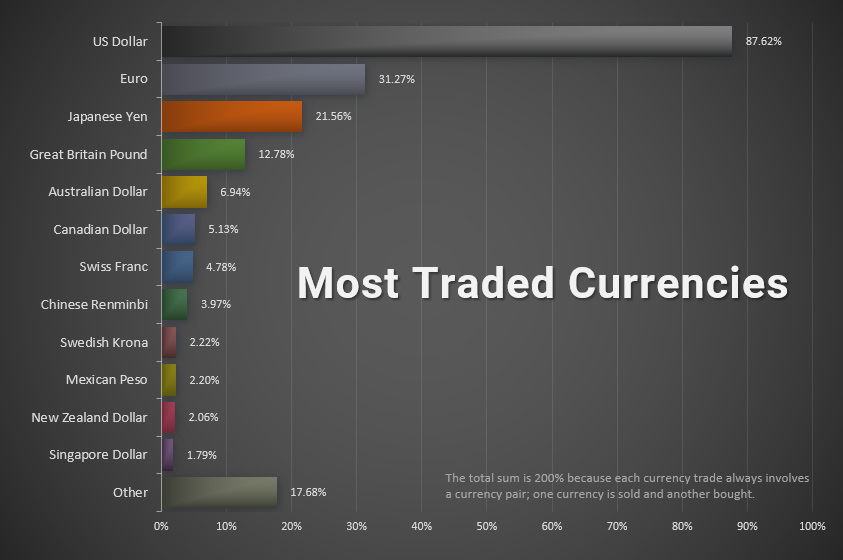
You may be wondering how to analyze stocks. This article will discuss fundamental, technical, qualitative, and quantitative methods. Understanding the terminology and methods is the first step to understanding how to analyze stocks. If you don't have the ability to read charts, how will you be able to comprehend the stock price? Continue reading for more information. These are some helpful tips. Below are some fundamental terms and methods for analysing stocks. These will allow you to begin to analyze the stock market's health.
Analyse fundamental
The principal objective of fundamental analysis, using financial ratios and historical data, is to determine the company's worth. The analysis is used to predict the company’s future growth and stability as well as its investment potential. This analysis relies solely on quantitative data and removes any possibility of subjective opinion. Traders need to be objective because they are unable to forecast prices on a sole discretionary basis. Fundamental analysis also enables future traders to predict certain variables.
While performing fundamental analysis can seem complicated, it has many advantages. If done correctly, fundamental analysis can help you avoid mistakes in the stock market by helping you identify the true worth of a company’s stock. Investors can avoid the daily fluctuations in the stock market by buying a company based upon its intrinsic value. Fundamental analysis is complicated and can make even the most industrious investors doubt its validity. However, if you follow these guidelines, you'll be on the right track.

Analyse technique
Technical analysis of stocks refers to a type of technical analysis which assumes that the current stock prices reflect all information available. Although prices are a function supply and demand, they also reflect emotions and mass psychology. Consequently, these prices can move dramatically based on expectations and other factors. A "technician" tries to disregard this emotional factor in trading and makes decisions based on a company's chart patterns.
Charles Dow, inventor of the Dow Jones Industrial Average was responsible for the origins of technical analysis. This system was used to explain market direction and events. This system was used by many financial experts to analyze markets. Charles Dow is the one who introduced technical analysis to mainstream finance. Today, technical analysis is based on the Dow Jones Industrial Average. If you're new to investing, a fundamental approach might not work for you.
Quantitative analysis
Quantitative analysis is often referred to as "Q-factor" for the stock market. It's a way of determining the stock’s value by looking at financial statements. This question is a great way for investors to decide which stocks they are worth investing. Investors seek answers that are relevant to the company's sector structure, incomes or expenses, assets and liabilities, and corporate governance.
The ability to analyze large quantities of data is essential for quantitative analysis. An analyst who is able to spot patterns in data will be able make sound investment decisions. Success is not guaranteed by any one indicator. For example, a stock's intrinsic strength should dictate whether it will rise or fall in price. Quantitative analysis must enable you to identify factors that have been driving past and future success such as the company's market capital.

Qualitative analyses
An investor can analyze a company's financial statements and also qualitatively analyze stocks to determine which companies provide better returns. Companies that work in diverse industries are more likely to be able to perform qualitative analysis. However, these theoretical considerations might not always be in line with reality. Here are some tips to help guide you in your decision making. Let us explore the differences between quantitative and qualitative analysis.
Fundamental analysis is a great starting point. It includes analyzing three broad spheres, namely business, personal and financial. It also includes the understanding of company specific factors such as management and financial position. However, additional documents may be just as valuable to supplement data. It is important to take into account qualitative factors such as corporate governance practices, corporate governance and ethics in order to better understand qualitative analysis. It is also important to evaluate the consistency of a company's business strategies.
FAQ
What is a Bond?
A bond agreement between two parties where money changes hands for goods and services. It is also known as a contract.
A bond is usually written on paper and signed by both parties. The document contains details such as the date, amount owed, interest rate, etc.
When there are risks involved, like a company going bankrupt or a person breaking a promise, the bond is used.
Sometimes bonds can be used with other types loans like mortgages. The borrower will have to repay the loan and pay any interest.
Bonds can also be used to raise funds for large projects such as building roads, bridges and hospitals.
It becomes due once a bond matures. This means that the bond owner gets the principal amount plus any interest.
Lenders are responsible for paying back any unpaid bonds.
How can I find a great investment company?
You want one that has competitive fees, good management, and a broad portfolio. The type of security in your account will determine the fees. Some companies charge nothing for holding cash while others charge an annual flat fee, regardless of the amount you deposit. Others charge a percentage on your total assets.
It is also important to find out their performance history. You might not choose a company with a poor track-record. Avoid companies that have low net asset valuation (NAV) or high volatility NAVs.
You should also check their investment philosophy. An investment company should be willing to take risks in order to achieve higher returns. If they're unwilling to take these risks, they might not be capable of meeting your expectations.
What is the difference in the stock and securities markets?
The entire list of companies listed on a stock exchange to trade shares is known as the securities market. This includes stocks, bonds, options, futures contracts, and other financial instruments. There are two types of stock markets: primary and secondary. Stock markets that are primary include large exchanges like the NYSE and NASDAQ. Secondary stock market are smaller exchanges that allow private investors to trade. These include OTC Bulletin Board (Over-the-Counter), Pink Sheets, and Nasdaq SmallCap Market.
Stock markets are important as they allow people to trade shares of businesses and buy or sell them. Their value is determined by the price at which shares can be traded. A company issues new shares to the public whenever it goes public. These newly issued shares give investors dividends. Dividends can be described as payments made by corporations to shareholders.
Stock markets provide buyers and sellers with a platform, as well as being a means of corporate governance. Boards of directors are elected by shareholders to oversee management. Managers are expected to follow ethical business practices by boards. If the board is unable to fulfill its duties, the government could replace it.
Who can trade on the stock market?
Everyone. But not all people are equal in this world. Some have better skills and knowledge than others. They should be rewarded.
Trading stocks is not easy. There are many other factors that influence whether you succeed or fail. You won't be able make any decisions based upon financial reports if you don’t know how to read them.
So you need to learn how to read these reports. You need to know what each number means. Also, you need to understand the meaning of each number.
You will be able spot trends and patterns within the data. This will enable you to make informed decisions about when to purchase and sell shares.
If you are lucky enough, you may even be able to make a lot of money doing this.
How does the stock exchange work?
When you buy a share of stock, you are buying ownership rights to part of the company. A shareholder has certain rights over the company. He/she is able to vote on major policy and resolutions. The company can be sued for damages. He/she also has the right to sue the company for breaching a contract.
A company can't issue more shares than the total assets and liabilities it has. It's called 'capital adequacy.'
A company with a high capital adequacy ratio is considered safe. Companies with low ratios of capital adequacy are more risky.
Are stocks a marketable security?
Stock is an investment vehicle that allows you to buy company shares to make money. This is done by a brokerage, where you can purchase stocks or bonds.
You could also invest directly in individual stocks or even mutual funds. In fact, there are more than 50,000 mutual fund options out there.
The difference between these two options is how you make your money. Direct investment earns you income from dividends that are paid by the company. Stock trading trades stocks and bonds to make a profit.
In both cases you're buying ownership of a corporation or business. You become a shareholder when you purchase a share of a company and you receive dividends based upon how much it earns.
Stock trading allows you to either short-sell or borrow stock in the hope that its price will drop below your cost. Or you can hold on to the stock long-term, hoping it increases in value.
There are three types to stock trades: calls, puts, and exchange traded funds. Call and put options allow you to purchase or sell a stock at a fixed price within a time limit. ETFs can be compared to mutual funds in that they do not own individual securities but instead track a set number of stocks.
Stock trading is very popular because it allows investors to participate in the growth of a company without having to manage day-to-day operations.
Stock trading can be very rewarding, even though it requires a lot planning and careful study. It is important to have a solid understanding of economics, finance, and accounting before you can pursue this career.
Statistics
- Individuals with very limited financial experience are either terrified by horror stories of average investors losing 50% of their portfolio value or are beguiled by "hot tips" that bear the promise of huge rewards but seldom pay off. (investopedia.com)
- The S&P 500 has grown about 10.5% per year since its establishment in the 1920s. (investopedia.com)
- Ratchet down that 10% if you don't yet have a healthy emergency fund and 10% to 15% of your income funneled into a retirement savings account. (nerdwallet.com)
- "If all of your money's in one stock, you could potentially lose 50% of it overnight," Moore says. (nerdwallet.com)
External Links
How To
How to Invest Online in Stock Market
Stock investing is one way to make money on the stock market. There are many ways you can invest in stock markets, including mutual funds and exchange-traded fonds (ETFs), as well as hedge funds. Your risk tolerance, financial goals and knowledge of the markets will determine which investment strategy is best.
To be successful in the stock markets, you have to first understand how it works. This includes understanding the different investment options, their risks and the potential benefits. Once you are clear about what you want, you can then start to determine which type of investment is best for you.
There are three main types: fixed income, equity, or alternatives. Equity is the ownership of shares in companies. Fixed income is debt instruments like bonds or treasury bills. Alternatives include commodities like currencies, real-estate, private equity, venture capital, and commodities. Each category has its pros and disadvantages, so it is up to you which one is best for you.
Two broad strategies are available once you've decided on the type of investment that you want. One strategy is "buy & hold". You purchase some of the security, but you don’t sell it until you die. Diversification, on the other hand, involves diversifying your portfolio by buying securities of different classes. By buying 10% of Apple, Microsoft, or General Motors you could diversify into different industries. You can get more exposure to different sectors of the economy by buying multiple types of investments. You can protect yourself against losses in one sector by still owning something in the other sector.
Risk management is another important factor in choosing an investment. You can control the volatility of your portfolio through risk management. If you are only willing to take on 1% risk, you can choose a low-risk investment fund. On the other hand, if you were willing to accept a 5% risk, you could choose a higher-risk fund.
Learn how to manage money to be a successful investor. You need a plan to manage your money in the future. You should have a plan that covers your long-term and short-term goals as well as your retirement planning. This plan should be adhered to! Keep your eyes on the big picture and don't let the market fluctuations keep you from sticking to it. Keep to your plan and you will see your wealth grow.